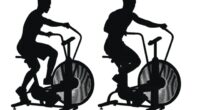It’s never too late to embark on a journey to better health. One of the most beneficial habits you can adopt is lifting weights. If you’re in your 50s and feeling like your fitness levels have decreased, you may be curious about the changes that occur in your body when you start weight training.
Fortunately, we spoke with Kyrie Furr, CPT, a certified personal trainer and performance coach with Barbend. She helps us answer this question and explore weightlifting’s many benefits. Plus, she shares some expert tips for lifting weights safely at 50 and beyond.
From building strength and lean muscle to better metabolic health, healthier joints, and improved mobility, weight lifting is a surefire way to boost your long-term health. Whether you want to improve your quality of life or prevent age-related decline, discover what happens to your body when you start lifting weights after 50.
The Benefits of Lifting Weights


Strength training offers a range of health benefits that become non-negotiable as you age. One of the most significant advantages is the preservation and rebuilding of muscle mass. After age 50, natural muscle loss (a condition called sarcopenia) accelerates, leading to weakness, reduced mobility, and an increased risk of falls. Fortunately, the National Institutes of Health (NIH) reports that regular weightlifting can combat this by stimulating muscle growth and maintaining strength, helping you stay functional in daily activities.
“Lifting weights can offer a wide range of benefits for anyone of any age or fitness level,” Furr explains. “Some benefits include increased muscle mass or strength, improved metabolism and bone density, enhanced cardiovascular health, and better joint health. Other benefits include improved flexibility, a boost in mood and confidence, and better balance and coordination.”
Lifting weights can also support bone health and increase bone density. A 2018 study published in Endocrinology and Metabolism found that strength training is essential for maintaining musculoskeletal health in older adults. This finding is critical because your bones naturally lose density as you age, increasing the risk of fractures and osteoporosis. Lifting weights places stress on the bones, prompting them to become stronger over time.
Additionally, strength training has been shown to improve metabolism, which tends to slow down with age. This can help you better manage weight and reduce body fat.
What Happens to Your Body When You Lift Weights After 50?


“Resistance or strength training can help counteract age-related muscle loss, preserving and potentially increasing lean muscle mass,” states Furr. This means that instead of experiencing the typical muscle decline associated with aging, you can maintain or even build new muscle.
According to a 2023 study in BMC Women’s Health, middle-aged women in their 50s who did strength training twice weekly for 10 weeks experienced significant muscle and strength gains.
Strength training may also boost your functional abilities. “Whether it’s lifting groceries or getting up from a chair, strength training can increase overall strength and coordination, allowing those in their 50s and beyond to conquer everyday activities easier and improving functionality,” says Furr.
Last but not least, studies suggest that weightlifting can lead to better balance by improving flexibility, mobility, and coordination. “Better balance helps reduce your fall risk and allows aging adults to feel more confident living alone longer,” adds Furr.
How To Start Lifting Weights Safely After 50


As with any new fitness routine, consult your doctor to ensure you’re healthy and physically ready before lifting weights. Once you get the go-ahead, begin with light weights or resistance bands, focusing on exercises that target major muscle groups like the legs, back, and chest.
Furr says, “Working with a trainer can ensure proper form and prevent injuries, especially when starting with resistance bands or machines to build foundational strength. Always start slow, focus on technique, and give your muscles adequate rest between sessions to avoid overtraining.”
Remember: Proper form is essential when lifting heavy weights. Lifting with poor form increases your injury risk, especially in the joints. Incorporating rest days into your routine is equally important to allow your muscles to recover and prevent overtraining. Finally, pair strength training with flexibility and mobility exercises to keep your muscles supple and joints healthy.
Frequently Asked Questions (FAQs)
What are the benefits of lifting weights after the age of 50?
There are several benefits of lifting weights after the age of 50, including:
- Improved muscle strength and tone
- Increased bone density
- Better joint flexibility and mobility
- Enhanced metabolism
- Improved balance and coordination
Is it safe for individuals over 50 to start weightlifting?
Yes, it is safe for individuals over 50 to start weightlifting. However, it is important to start with light weights and gradually increase the intensity as your strength and fitness levels improve. It is also recommended to consult with a fitness professional before starting any new exercise program.
How often should individuals over 50 lift weights?
It is generally recommended for individuals over 50 to lift weights 2-3 times per week. This allows for adequate rest and recovery between sessions, which is essential for muscle growth and overall health. It is also important to include a variety of exercises that target different muscle groups to prevent overuse injuries.
Are there any special considerations for weightlifting after the age of 50?
Yes, there are some special considerations for weightlifting after the age of 50, such as:
- Starting with light weights and proper form to avoid injury
- Listening to your body and not pushing yourself too hard
- Incorporating a proper warm-up and cool-down routine
- Consulting with a healthcare provider if you have any pre-existing health conditions






